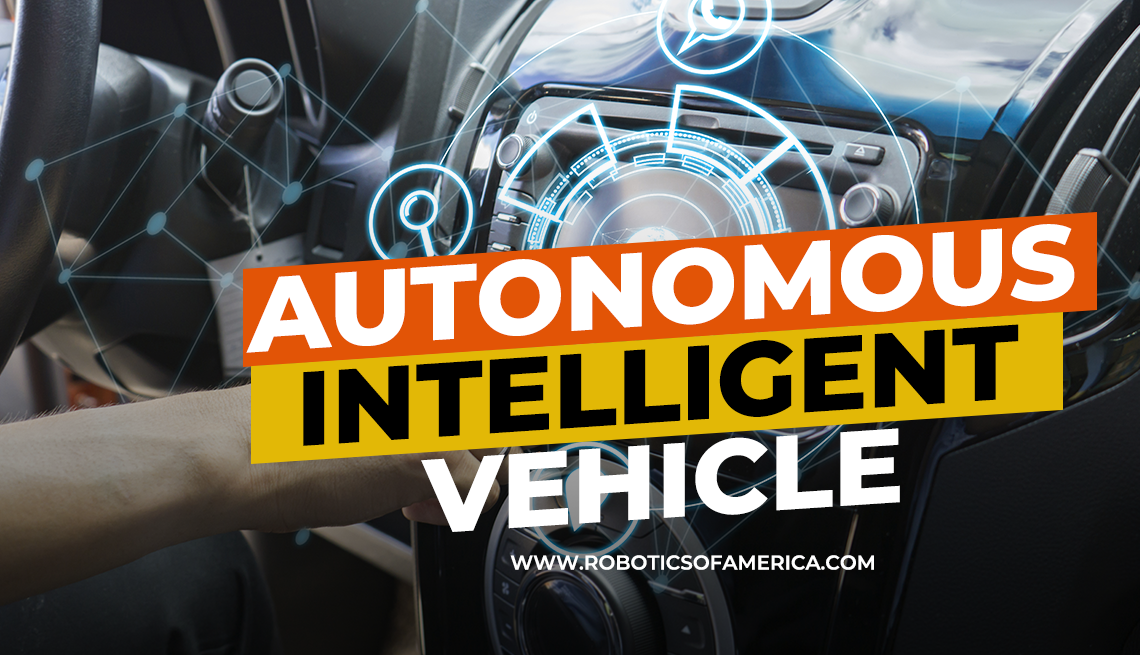
The Modern Autonomous Intelligent Vehicle
Autonomous intelligent vehicles (AIVs) are becoming common across many sectors of operations. The two main sectors are logistics and manufacturing. This is because AIVs have a reputation for boosting the production of employees. And having efficient employees leads to boosts in profits and ROI. Are you ready to learn more about autonomous intelligent vehicles? Let’s get started.
What Are Autonomous Intelligent Vehicles?
Autonomous intelligent vehicles are mobile robots. They get used to transport goods in warehouses and factories. This applies to operations involving inventory and shipping. Companies deploy them to make the work of their employees more efficient. While the human workers focus on complex tasks, the AIVS:
-Boost throughput
-Cut down on machine dwell time
-Reduce the number of errors
-Increase material traceability
Autonomous intelligent vehicles are often referred to as AGVs. AGV stands for autonomous ground vehicle. The safety measures of these vehicles have improved in recent years. That’s one key reason why more companies are beginning to use them. An autonomous intelligent vehicle's defined by its features. The following features should exist in order for a vehicle to get classified as an AIV:
-The AIV can operate in a safe capacity alongside humans.
-Companies does not need workspace retrofits.
-The purchased technology should feature rapid installation of AIV software.
-The AIV can plan alternate routes if there are obstacles or setbacks.
-The vehicle can operate in extreme, dynamic environments.
-The AIV can collaborate with other autonomous vehicles in a fleet.
The 4 Main Advantages of Autonomous Intelligent Vehicles
Autonomous intelligent vehicles/AGVs provide many benefits to organizations. These are the four key advantages of deploying them:
-AIV Advantage #1: AIVs get programmed with plenty of safety precautions. These measures prevent employees from getting injured.
-AIV Advantage #2: The vehicles use intelligent path planning software. The software ensures that the vehicles can move on their own fast. Better yet, they can re-route whenever they encounter obstacles. Intelligent path planning is a form of autonomous navigation. The self-navigation software makes the vehicles avoid more than obstacles. It stops them from running into human workers. AIVs are capable of handling most dynamic environments. That’s because each vehicle gets field-proven before it's sold to a company. The AIV pays attention to a digital map at all times.
-AIV Advantage #3: The vehicles feature off-line assembly kitting. The kitting allows employees to program the AIVs with ease. This saves organizations money. Workers can provide routine maintenance instead of a third party. User friendly software helps people of all skill levels program the robots. Few facilities modifications are necessary.
-AIV Advantage #4: Each intelligent vehicle has an on-board power supply. The supplies positions the vehicles to run an average of 18 hours per day. Managers can charge the AIVs at whatever time works best for the organization. Many of the vehicles have self charging operations. This means that they can recharge without much input from humans.
The 5 Main Limitations of Autonomous Intelligent Vehicles
Autonomous intelligent vehicles are not perfect. Their capabilities will improve as robotic technology continues to evolve. In the meantime, these are the five common limitations of AIVs:
-AIV Limitation #1: They can cost companies a lot of money. Since robotic technology is cutting-edge, AIVs are not cheap. But expect to see their prices fall in the coming years. Plus, the long-term advantages of AIVs outweigh the short-term costs.
-AIV Limitation #2: It can take a lot of time to install AIV software. Once again, expect this to become less of a factor as time goes on. Advancements in technology will shorten the installation timeframes.
-AIV Limitation #3: AIVs operate using pre-programmed paths. This leads to some employees getting frustrated. Why? Because re-programming has to take place when environments change. But do not despair. AIVs are growing more intelligent and self-reliant by the year.
-AIV Limitation #4: The vehicles are sometimes difficult to reconfigure. This leads to companies having to service some AIVs with third parties. Reconfiguration will get easier as technology develops.
-AIV Limitation #5: Some AIVs struggle to drive past obstructions and obstacles. But this is not a huge problem. A human worker has to jump in and move the obstruction out of the way.
Autonomous Intelligent Vehicles Will Soon Transport People
Autonomous Intelligent Vehicles will someday operate on roads and highways. Expect to see plenty of them manufactured for general use in the coming years. That’s right- industrial companies will not be the only ones using these vehicles. Autonomous technology will allow transportation to occur within the public sector. People will ride in AIVs to get from one place to another. No driving required.
Keep in mind that the public consumption of AIVs is still years away. More safety testing's needed before the vehicles will arrive on the market. They are safer loading boxes in warehouses than serving as a form of taxi-cab. That’s why ground transport vehicle safety is a growing government concern. Regulations will have to get put in place. Otherwise, robotics companies will not have a framework to develop their AIVs. This is why intelligent vehicle systems are so important. The smarter the vehicle, the safer the vehicle.
Conclusion: Autonomous Intelligent Vehicles Improve Operations for Many Companies
Sure, autonomous intelligent vehicles have their fair share of shortcomings. But those shortcomings will get reduced as technologies improve. In the meantime, AIVs are improving operations for many types of organizations. Please contact our firm today if you would like to learn more about AIVs. We can help you find the right AIV that fits the needs of your company. Also, you can continue to browse our other robotics articles. We plan to release related content about subjects like these:
-An Introduction to AGVs
-Mobile Robots
-Robotic Automation
-AI in AIVs
-Self-Driving Cars
-The Levels of Automation
-The Grades of Automation
-Intelligent Vehicles of the Present and Future
-Introduction to Intelligent Infrastructures

